Art Journaling
Submitted by icarus on Thu, 07/21/2005 - 4:24pmFly was the person who originally inspired me to start keeping a journal when I was 19 years old. She came on tour with the band I was playing in and I was immediately transfixed with her big black art book full of collages and sketches and late night rants. Now more than 10 years later I have a huge shelf of big clunky art books full of the details of my own life and I've been taking great pleasure in seeing how much people have been appreciating Fly's Art Journaling workshops at Fountain House.
Fly's first Art Journaling Workshop was held on Wednesday June 15 2005 from 5:30-7:00pm at Fountain House - 425 west 47th Street in New York City. There were weekly workshops until Wednesday July 20 and if we're lucky they will resume in the fall of 05.
I asked Fly to type up some notes for us so that others could be inspired to do similar workshops in their own towns or just start journaling on their own. The following is what she wrote up for us. -Sascha
Introduction
Art Journaling is like a combination of a written & visual journal - drawings, collage, paintings, scribbles, poetry, dreams, thoughts, stories, & any other experiments you might want to try.
When I had a "nervous breakdown" in 1992 I did a lot of self-portraits. I think that visualizing myself within my environment helped me to eventually realize that things were not as scary as I was thinking they were.
I have been keeping a sketchbook since before I can remember - when I was growing up my family moved around a lot & drawing became one of the stabilizing forces in my life. At the time I was also an avid reader & enjoyed trying to write stories - at some point I began keeping a written journal of my daily experiences. Later when I went off traveling by myself I was constantly drawing my new surroundings & writing about my thoughts or jotting down information about whatever I found interesting. Drawing & writing allowed me to focus & relax & situate myself within sometimes scary but always captivating environments. When I finally began to have a stable home-life I continued working in my journal documenting my daily life in New York City. At first the stable home-life wasn't so stable as I was living in a squatted building in the Lower East Side of NYC - there were sometimes scary situations of impending evictions & raw living conditions. Through my sketchbook/journal I was able to not only document the progress of my building & the neighborhood but I was also able to visualize my place within a bigger picture & see that there was hope.
When I had a "nervous breakdown" in 1992 I did a lot of self-portraits. I think that visualizing myself within my environment helped me to eventually realize that things were not as scary as I was thinking they were.![]()
In 1995 I started traveling the world with the band God Is My Co-Pilot & I took my sketchbook everywhere! - I drew a lot of people because we were meeting a lot of people everyday - & I would write down the stories they would tell because usually they spoke English as a second language & I thought the way they used words was very poetic - this collection of people & stories later evolved into a project called PEOPs which is my practice of drawing portraits of people & writing their stories in the space around the drawing. In 2003 I had a book published called PEOPs which is a collection of about 196 portraits & stories. I tell you this as an example of something that can grow out of keeping an art journal - you may not necessarily get a book published but the practice can help you focus & figure out for yourself the direction you would like your life to take.
Introduction (Part II)
Keeping an art journal is a good way to ground yourself - it can act as a map to orient you within your concept of the larger world. Sometimes you can get distracted by your own thoughts & fears, especially if you are in a new situation. Drawing or writing about it can help you visualize your place in relation to the exterior world. Sometimes even if you don't have your journal or any drawing tools with you you can pretend that you are drawing - look around & notice where you are, notice details, see what resonates with you. If you were going to do a drawing of the situation where would you start? How would you place yourself within the drawing? Sometimes just by looking around & becoming acquainted with your environment you can relieve some of your stress & anxiety - instead of being distracted by outside stimuli or your own multi-dimensioned imagination you can practice placing yourself within your own concept of time & space.
Art making is possible for everyone!! By keeping an art journal you can empower yourself to develop your intuition & creative superpowers - your innate ability to communicate effectively to yourself & to the world - your art journal may contain the expression of your personal thoughts & feelings - once visualized you can confront inner conflicts & fears & realize that they need not be so overwhelming.
"making art is believed to help one become more flexible - to self actualize & tap creative problem solving & intuition - one can also experiment with new ideas, new ways of expression & new ways of seeing" - Cathy A. Malchiodi - The Art Therapy Sourcebook
The emphasis is on the inner experience (not outward drawing skills) - feelings, perception, & imagination - it may be possible to find resolutions to problems through your own personal guidance - all that is required is your own commitment to active & uncensored participation.
Getting Started
If you have never had a sketchbook or journal before it may seem a little intimidating - the best thing to do is to start simple - I would recommend getting an unlined notebook from your local stationary store (when choosing the size be aware that you may want to be able to carry it around with you as much as possible). You can also find nicer (& more expensive) hard bound blank sketchbooks at an art supply store, the important thing is to take the leap & get yourself some sort of book. To begin with all you will need is a pencil but if you are going to continue with your creative experiments you might want to start collecting other basic mediums - colored pencils, watercolor paints, chalk or oil pastels & materials for making collage (interesting magazines - words & pictures, colored paper, - anything that catches your eye).
Before starting the drawing exercises you might want to do a short relaxation exercise - the following is an exercise that I copied out of Malchiodi's book:
- Close your eyes & focus on your breath slowly inhaling & exhaling 3 times.
- Continue to inhale & exhale slowly & relax the muscles in your face, especially the area around your jaw. Let your jaw open slightly, so that any tension there can flow away from your face.
- Relax the muscles in your scalp & neck, letting your head move forward slightly.
- Relax the muscles in your shoulders & from there, let the relaxation move down into the muscles of your arms & hands. Continue to feel the tension slip away from your back, over your chest, down to your stomach, & all the way down to the base of your spine.
- Let the feeling of relaxation spread to your thighs, knees, & lower legs, down to your ankles & feet until it reaches the tips of your toes.
- Start from the top of your head & work down. Take a few moments now to scan your body for any part that is not fully relaxed. If you feel any part of your body that is not fully relaxed, take a deep breath & send the breath into that area, imagining warmth & relaxation reaching it. When you exhale, imagine the tension leaving your body with the breath.
The following exercises may help you get started - the important thing is not to think about how the drawing SHOULD look & concentrate more on experimenting with the process of creativity - try not to judge your work as "good" or "bad" but instead try to see what emotions & ideas your drawings inspire - put a date on all of your drawings (or on the back) so you can keep track of your progress.
Exercise #1
Take your pencil & a page in your journal - start by drawing lines around the edges of the paper - just straight lines - get to know how the pencil feels in your hand. After you have outlined the paper several times try drawing some diagonal lines across the paper - try using the pencil in different ways - try laying the point down & drawing that way - like you are shading - try making short sharp lines - try making different shapes - let yourself experiment with how many different ways you can use a pencil. After you have filled the page look at what you have drawn - maybe write a few lines about how the page makes you feel or how doing the exercise made you feel - give it a title if you feel inspired - you may want to turn the page around to see how it looks from different orientations.
Exercise #2
Using pencil & paper - (you can try doing this exercise with your eyes open or closed or both!) start by drawing lines randomly on the page as you did in exercise #1 - think of how you are feeling as you are drawing these lines - look to see if there is any shape to your lines - try to develop that shape - turn your drawing around if you want to - look at it from all directions - are there other shapes that are apparent? Work on any shapes that you see to form a composition - when you are satisfied try to write a few lines describing your drawing or how you felt doing it - see if you can give it a title.
Exercise #3
Using pencil & paper - close your eyes & think of a sound - it could be a sound that you heard recently that resonated with you or a sound from your past that you remember - keeping your eyes closed try to draw the shape of the sound on the page - think of the components of the sound. Is it a repetitive sound or is it constantly changing? Is it loud or soft? Rhythmic or erratic? Try to keep hearing the sound as you draw - keeping your eyes closed try to picture yourself within the sound. What is your shape in relation to the sound? Is it bigger than you or smaller? Try to think of how the sound is affecting you as you draw. When you feel satisfied, open your eyes - look at the page & see how the image affects you - write a few lines about the sound & your relationship to it - try to also write about how you feel about drawing - does it give you any ideas?
Exercise #4 - self-portrait with eyes closed
Using pencil & paper - close your eyes & try to imagine that you are looking at yourself in the mirror - keep the pencil on the paper for the entire exercise - don't lift it up - start by outlining the shape of your head - do this a few times until you feel comfortable with the shape you are imagining - keeping the pencil on the paper continue by outlining your eyes - the shape of the eyes then the iris & the pupil - move on to the eyebrows - imagine how they are positioned over your eyes - draw your nose & then your mouth - add the ears & your hair - add any details that are unique to your face - dimples or birthmarks or facial hair or moles - when you feel you have completed your face open your eyes - what comes to mind when you look at your drawing - what emotions or thoughts do you have - try to write a few lines about how you feel.
Exercise #5 - self-portrait
Using pencil & paper - try to set up a comfortable situation where you can look into a mirror while you are drawing - keep your eyes on your face & don't look down at the paper as you draw - also don't lift the pencil off of the paper - draw your face starting with the outline of your head & continuing as instructed in exercise #4 - when you are finished look at the drawing & try to write a few lines describing it or describing your emotion in looking at it - can you think of a title?
All of the above exercises can be done with a variety of materials - you might want to go back later to some of your pencil experiments & add color with color pencils or watercolor or pastels - you can experiment with the characteristics of different materials by doing the scribble exercises (1&2) - you could also go back to any of your drawings & glue pictures or words from books or magazines onto them if the image strikes you as fitting.
Other ideas for your art journal:
Writing down your dreams. This can take some practice. It's good to keep your journal or a small notebook by your bed so it's easy to reach. Its hard to try to write down dreams when you are still half asleep but by the time you wake up fully you often will have forgotten the details - so you have to train yourself to write them down immediately upon waking. Sometimes just by jotting down a few lines you will be able later to remember more of the details.
Try making drawings about your dreams or images that you have seen in your dreams.
Make a map - you can interpret this anyway you wish - you could make a map of your house or a map of your body or a map of your emotional state or a map of your activities in a day. Making a map reinforces the idea of navigating & finding your place in the chaos - it may work to help you focus & relax.
Rubbings - you can make rubbings by putting a piece of paper on top of anything that has an engraved or embossed surface - i.e.: gravestones, manholes, woodcarvings - put the paper down on top of the surface & rub over it with a pencil or crayon (use one or several colors). You can move the paper around to create a new configuration - you can also color the whole thing later or paint over it with watercolors or glue other images or words on top.
Mandela Drawings - drawings based on a circular design - often useful for relaxation & meditation.
Collage - start collecting images from magazines or books - images that you find appealing or that resonate with you in some other way - you can also collect words or articles - keep these materials together in an large manila envelope or where ever is convenient for you - at some point you may be inspired to create an entire composition using your cut out images &/or words - or you could glue specific images or words onto other drawings you have created.
Cut & Paste - try cutting shapes out of different colored construction paper - play with different arrangements on the page before gluing them down - try different types of compositions - try making a picture that is scary - one that is tranquil.
Scrapbook - I use the back pages of my art journal to glue all of the flyers, notes, articles, phone numbers, & random ephemera that I collect - but you don't have to use the back of your book - you could glue that stuff anywhere - or not - its up to you.
There are a million different ideas you can experiment with! The most important thing is your commitment to expressing yourself creatively & actively involving yourself in the process. Try to keep your art journal with you & use it as much as possible! Put a date on everything - it's very enlightening to go back & look & what you have done & remember where you were at the time physically & emotionally. I believe that our imaginations & creative superpowers have the capacity to help us navigate safely through the treacherous & stupendous journey of our lives.
to get in touch with fly write her at: fly(at)bway(dot)net

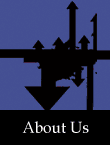
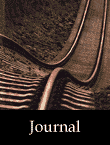
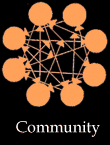
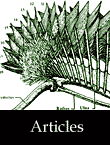
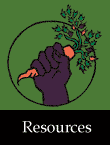
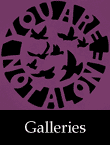
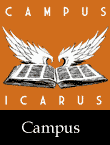




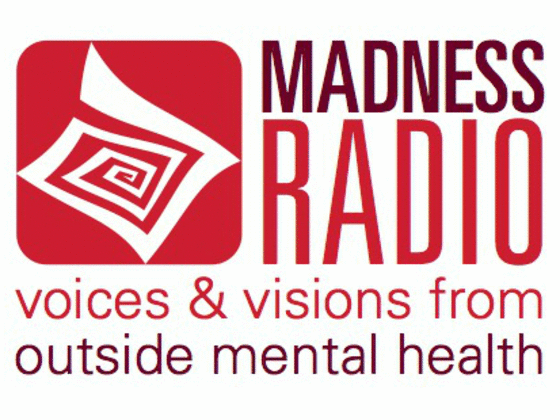
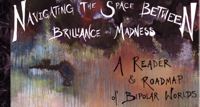

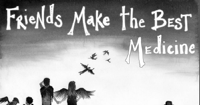
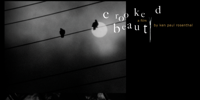


Art journaling
Dear icarus and Fly,
I'm new to the Icarus Project, but I got sent an information pack the other day by Cath from Leeds (UK) who introduced me to it. I can't thank her yet, because we've fallen out etc.
I work with an art organisation in Huddersfield (UK) called AIM (Artists in Mind) which gived people studio space, materials and exhibition opporunities so that we can choose to redefine ourselves as artists instead of mentalists.
I'll email them your article, both because it is a good and useful article (I have about 3 scrapbooks that I hardly use) and because AIM seems to have similar philosophies to Icarus Project, except that we are focused mainly on art, and we are not quite non-hierarchical, being a charity with trustees and paid staff, as well as artists and volunteers.
However, I would like to get people at AIM interested in the Icarus Project. If you think you can help encourage them, you can contact our office on [email protected]or see our websites at http://www.artists-in-mind.org.ukandhttp://www.myspace.com/artists_in_mind
Maybe we'll be able to get a group going there.